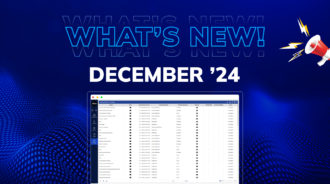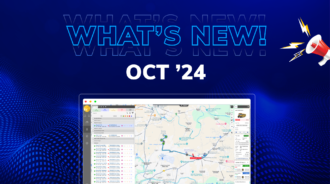Innovative Route Optimization Saves Time and Fuel for School Transport Businesses
In the bustling world of transportation, time and fuel are precious commodities. For a company, which is a prominent player in school bus services, maximizing these resources became a mission. Through innovative route optimization and advanced school bus monitoring software, they’ve redefined efficiency and safety. Let’s dive into their remarkable journey and discover how these technological advancements can transform any transport fleet.
The Challenge: Inefficiency and Rising Costs
Running a large fleet of school buses comes with its own set of challenges. The company faced several issues:
- Inefficient Routes: Drivers often took longer routes due to outdated maps and lack of real-time traffic updates. This not only delayed student pick-ups and drop-offs but also increased the likelihood of buses encountering traffic congestion and roadblocks, leading to further delays and frustrations.
- High Fuel Consumption: Inefficient routing led to excessive fuel use, inflating operational costs. Without an optimized routing system, buses often traveled longer distances than necessary, consuming more fuel and driving up costs. This inefficiency was a significant financial burden on the company, impacting their profitability.
- Safety Concerns: Without real-time monitoring, ensuring student safety and timely pick-ups/drop-offs was a constant worry. Drivers had no way to communicate sudden changes or emergencies effectively, and parents were left in the dark about their children’s whereabouts, leading to anxiety and dissatisfaction.
- Environmental Impact: Higher fuel consumption also meant a larger carbon footprint, which was against their sustainability goals. As a responsible company, the company was committed to reducing their environmental impact, but inefficient routes hindered their efforts, leading to higher emissions and a negative environmental footprint.
With these pressing issues, the company needed a comprehensive solution that could address all these pain points effectively.
Enter Innovative Route Optimization
The company decided to implement innovative route optimization techniques paired with advanced school bus monitoring software. This technology promised to streamline their operations, making their fleet more efficient and safer for students.
What is Route Optimization?
Route optimization is the process of determining the most convenient path for vehicles to take. This involves considering multiple factors such as traffic and road conditions, roadblocks, weather, and many more. The goal is to minimize travel time and fuel consumption while maximizing safety and punctuality.
The Solution: School Bus Monitoring Software
To achieve their goals, the company chose a state-of-the-art school bus monitoring software. Here’s how this software played a pivotal role:
Real-Time GPS Tracking
With GPS tracking, the company could monitor the real-time location of each bus. This ensured that buses were following the optimized routes and allowed for immediate action if deviations occurred. It also provided an added layer of security, as any unexpected stops or route changes could be quickly identified and addressed.
Automated Route Planning
The software provided automated route planning, taking into account live traffic updates, road conditions, and the specific requirements of each route. This not only saved time but also reduced fuel consumption significantly. By continuously analyzing and adjusting routes, the system ensured that buses always traveled the most efficient paths.
Alerts and Notifications
Parents and school admins received realtime alerts and notifications about the bus’s status. This feature enhanced communication and ensured that everyone was informed about any delays or changes in the schedule. In case of emergencies or unexpected delays, parents and schools could make informed decisions promptly.
Safety Features
The software included safety features such as geo-fencing, which alerted the authorities if a bus deviated from its designated route. Additionally, it could monitor driver behavior, flagging any instances of rash driving or unscheduled stops. This real-time monitoring helped in maintaining high safety standards and addressing potential issues before they escalated.
Implementation Process
Implementing this innovative route optimization wasn’t an overnight process. It involved several key steps:
1. Needs Assessment
The company began by assessing their specific needs. This involved important aspects like analyzing current routes, fuel consumption patterns, and safety protocols. They identified the critical areas where improvements were necessary.
2. Choosing the Right Software
After thorough research, they selected a school bus monitoring software that met all their requirements. The decision was based on the software’s features, user-friendliness, and cost-effectiveness.
3. Training and Onboarding
The next step was training the drivers and administrative staff. The software provider offered comprehensive training sessions to ensure everyone was comfortable using the new system.
4. Gradual Rollout
The company chose to roll out the new system gradually. They started with a small subset of their fleet, monitored the results, and made necessary adjustments before implementing it across the entire fleet.
The Results: Time, Fuel, and Safety
The results were nothing short of spectacular. Here’s a breakdown of the benefits the company experienced:
1. Significant Time Savings
Optimized routes reduced the traveling time by an average of 20%. Buses reached their destinations faster, ensuring that students spent less time commuting and more time in the classroom.
2. Reduced Fuel Consumption
By following the most efficient routes, fuel consumption dropped by 15%. This translated to substantial cost savings and a lower environmental impact.
3. Enhanced Safety
Real-time monitoring and safety features significantly improved student safety. The number of incidents decreased, and parents felt more secure knowing the exact location of their children’s bus.
4. Improved Punctuality
With automated route planning and real-time updates, buses adhered to their schedules more reliably. This improved the overall punctuality of the service, leading to higher satisfaction among parents and school administrators.
A Greener Fleet: Environmental Impact
Beyond operational efficiency, the reduction in fuel consumption had a positive environmental impact. The company’s carbon footprint decreased, aligning with their commitment to sustainability. This move not only benefited the company but also set a benchmark for other transportation services aiming to go green.
Future Prospects: Continuous Improvement
The company isn’t resting on its laurels. They plan to continually improve their services by following these points:
- Regularly Updating Software: Ensuring that their software is always up-to-date with the latest features and improvements.
- Expanding Services: Exploring additional features such as predictive maintenance, which can preemptively address potential bus issues.
- Enhanced Communication: Further improving communication channels between drivers, parents, and school administrators.
Conclusion
The journey of the company with innovative route optimization and school bus monitoring software is a testament to the power of technology in transforming operations. By embracing these advancements, they have set a new standard in efficiency, safety, and sustainability.
For other transport services looking to improve their operations, the success story of the company offers valuable insights. Investing in the right technology can lead to significant time and cost savings, enhance safety, and contribute to a greener environment.





